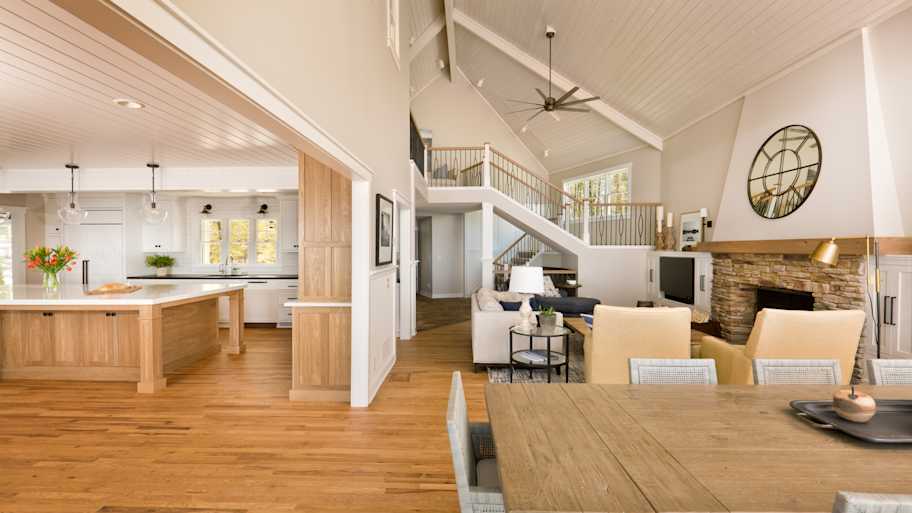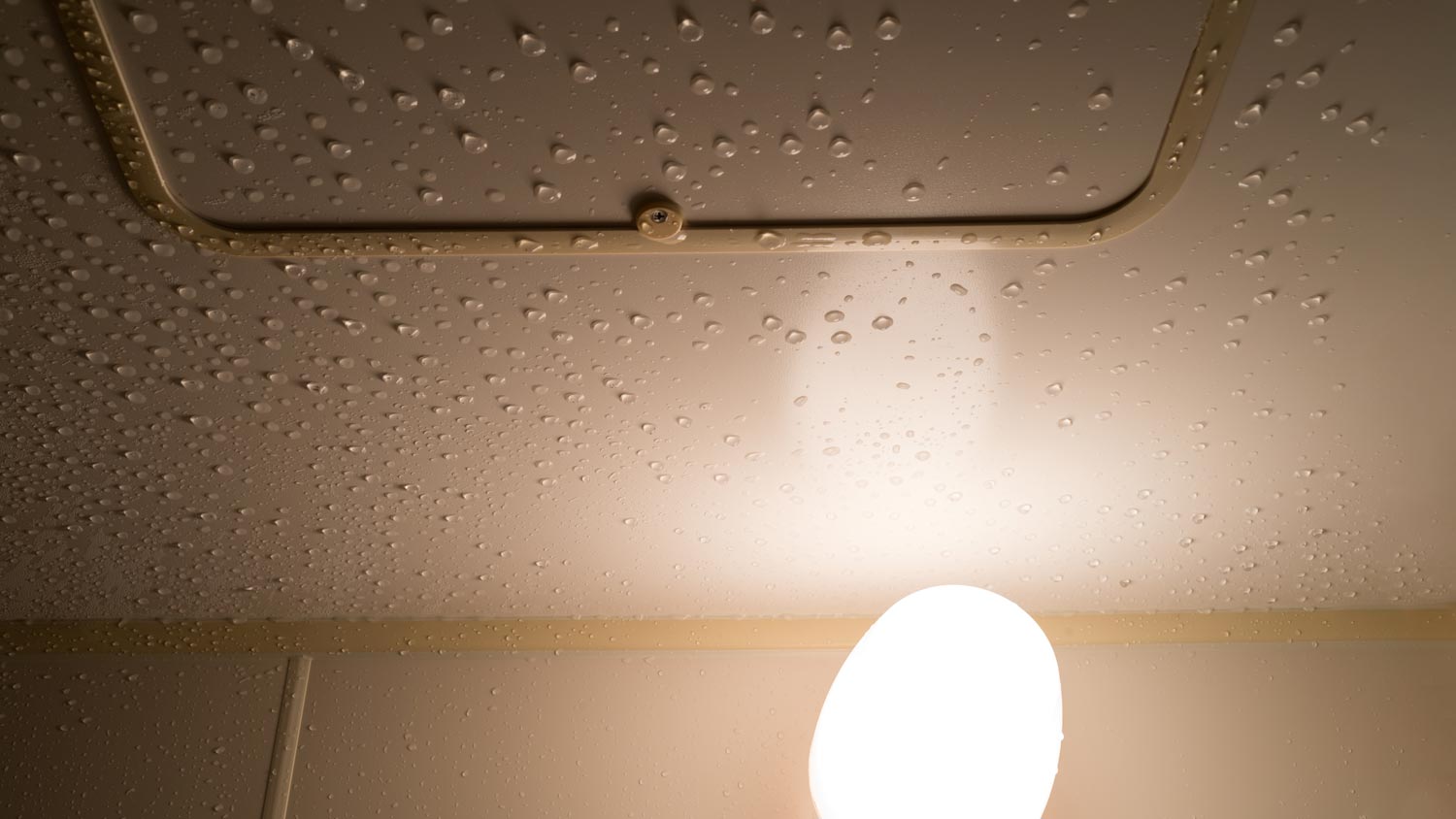
Plaster repair costs are determined by the size and type of damage. Discover why some fixes you can DIY and why some require a pro’s help.
Explore the hidden cost of making a statement with a cathedral ceiling


Cathedral ceilings make a dramatic statement, but come with venting challenges.
Proper ventilation includes air gaps, ridge vents, and appropriate amounts of insulation.
Call a pro as soon as you notice warning signs like ceiling moisture or ice dams.
If untreated, venting issues can wreak havoc on your home’s structure and safety.
Cathedral ceilings are a beautiful way to make a statement in your home, but they take away a good chunk of your attic space, which plays a vital role in ventilation. And if something goes wrong or the ventilation isn’t up to par, their problems are more complex than your average ceiling.
If you notice one or more of these signs that your cathedral ceiling has venting problems, you need to call a pro immediately before the damage becomes significant.
Because of their design, cathedral or vaulted ceilings are prone to condensation issues. Whether it’s from high humidity levels or over-insulating the attic space, cathedral ceilings often have venting problems that can create more dangerous conditions (like mold or structural damage) if left untreated.
Condensation on your ceiling is never a good sign, but if you have a cathedral ceiling, it’s probably an indicator of venting issues. Condensation looks like brown, gray, or yellow discolored patches or stains. It could also turn black or very dark if there’s mold, which means it needs to be treated immediately.
If you have a cathedral ceiling, you probably don’t have pipes running through the attic space. So while you may be tempted to call a plumber when you notice moisture on your ceiling, who you should call for a water leak in ceiling when it’s vaulted is probably a roofer or ceiling repair tech.
Hot air naturally rises, so attics are always going to be warmer than other areas of your home. But, excessive heat that feels stifling with a clear lack of air movement means the ventilation isn’t up to snuff. This heat can then seep through the cathedral ceiling, making your vaulted room noticeably warmer (and your cooling bills significantly higher).
When your attic is extra warm, it melts the snow that touches your roof—but the outside air then refreezes it before it has a chance to melt. When this happens, you’ll notice thick ice build-up on your roof (called ice dams). One to two inches of ice is normal, but anything above that or excessive icicles along your gutter are signs that something is wrong with your insulation or cathedral ceiling venting.
Without proper ventilation, condensation can build up on your roof, leading to damage. Some damage is visible from the sidewalk, like dark staining or rotting wood. You may also notice your shingles start to curl or crack. If left untreated, your roof could also start to sag or become uneven—which is a sign of severe issues underneath the shingles and wood.
But other damage isn’t as noticeable, or at least not immediately, like mold or compromised insulation.
If you suspect an issue with your cathedral ceiling or notice any of the warning signs above, you should always hire a ceiling repair pro for help.
Water damage—which is the most common outcome of venting problems—can wreak havoc on your home in more ways than one and isn’t something to put off. It can lead to mold, which can put your family’s health at risk, or wood rot, which can put your entire home at risk. For those reasons, we recommend hiring a pro immediately as soon as possible.
Roof or ceiling damage isn’t something most homeowners are equipped to handle on their own, and if you make a mistake, the outcome can be pretty severe—both in terms of your home’s structure and a potential injury.
You could probably handle a portion of the repairs, like fixing a water-damaged ceiling yourself, while leaving the actual venting and roof repairs to a professional. They’ll have the tools and the know-how to get the job done safely the first time.
The best way to prevent issues with your vaulted ceiling is to ensure the venting is up to par. There are a few ways you can do this, depending on your situation.
Don’t overfill insulation. Make sure there’s still room for air to flow within your limited attic space.
Install a ridge vent. A ridge vent runs the length of your roof’s ridge, offering more area for air to escape than a traditional ridge cap.
Keep humidity at 50% or lower. If you're having trouble keeping humidity levels in check, run dehumidifiers or check for air leaks.
Clean vents regularly. Use a vacuum or handheld brush to clean your vents regularly. To be even more thorough, do an annual deep clean using warm, soapy water.

On average, ceiling repair costs fall between $438 and $1,720. Cathedral ceilings are more complicated and dangerous to repair, which will put your cost on the higher end. Depending on your issue, you may have to pay for a few types of repairs.
For example, if the venting is inadequate and there’s water damage, you’ll have to pay for two repairs. Water damage ceiling repairs cost between $45 and $55 per square foot, while installing a new roof vent costs an average of $475.
To get the best rates, contact a few professionals to get a quote for the work. Just note that some may charge an initial inspection fee. If you choose to work with the person, that fee will likely be waived or wrapped into your total cost.
From average costs to expert advice, get all the answers you need to get your job done.

Plaster repair costs are determined by the size and type of damage. Discover why some fixes you can DIY and why some require a pro’s help.

Venetian plaster can add depth and texture to your aesthetic. Learn how much Venetian plaster costs based on factors like square footage and whether you hire a pro to help.

The cost of plastering walls and ceilings depends on the room size and ceiling height. Our tips can help you estimate an accurate cost.

Learn how to find the root cause of condensation on your ceiling before moisture causes mold and other problems.

Sagging ceiling could lead to more severe problems. Know these 7 causes for sagging ceilings and how to fix them before the issue becomes worse.

How long does plaster take to dry? It depends. This guide shows you how long plaster needs to dry and cure and why the process is worth the wait.